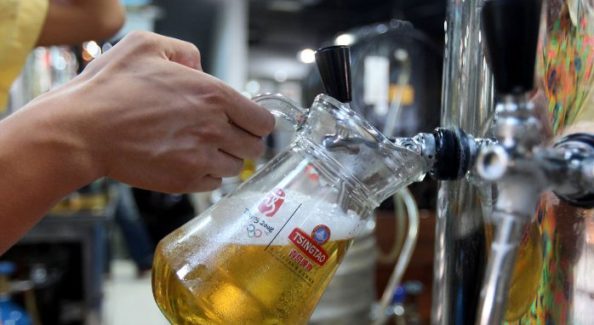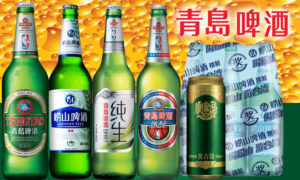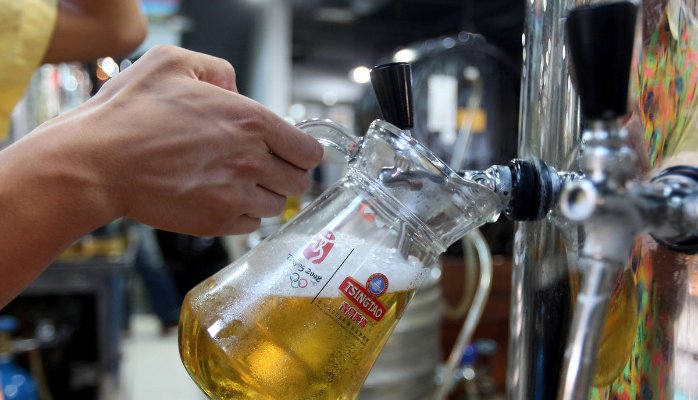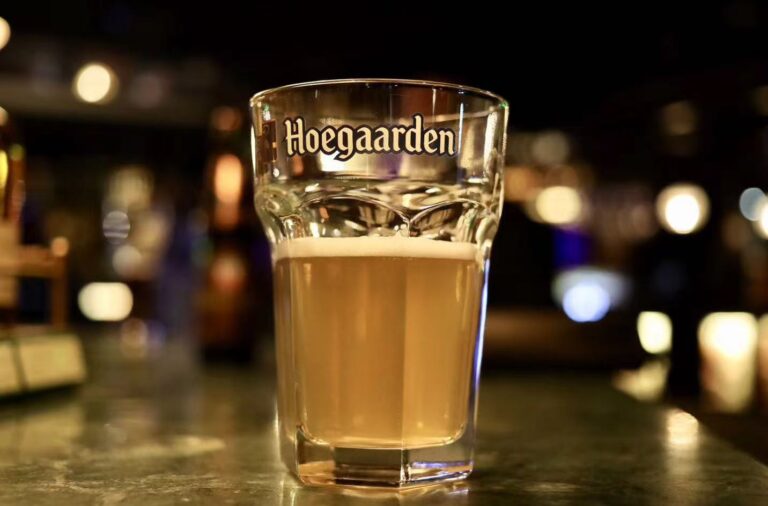Craft beer in China has shown an impressive growth with over a 25% volume share of mid-priced and premium brands. China is the largest beer market in the world with 450 million hectoliters per year. This would make up 25% of the global consumption of beer. Since 2015 the revenue for beer production industry in China has increased to USD $32.8 billion with an average annualized rate of 6.8%. In 2013, the output of beer and industry in China increased by 4.3% and 14.5% respectively due to the improvement of the market and the introduction of new industry products in the Chinese market. That being said, major players emphasized their brew with high-quality raw material and unique brewing technology to build their brand image. Within Asia-Pacific, China accounts for 70% of beer volumes and 18% of EBIT.
Craft beer in China: Leading Chinese players in the beer industry in China
 China Resources Snow
China Resources Snow- Tsingtao
- Anheuser-Busch
- Beijing Yanjing
Despite this achievement, the industry now faces serious challenges which include slowing growth rates and slim profit margins. Due to the slow economic growth and abnormal weather conditions, the beer market showed a declining by 2.6% to an output of 49.2 million tons. The growth of the companies in the craft beer in China will need to adapt their strategies to the unique characteristics of China’s diverse markets to open up new and better opportunities for growth.
In China, the beer market is mature and saturated; brewers may find it difficult to boost sales to dramatic new levels. With that in mind, research is essential to clarify consumers changing preference and priorities. The product packaging and price control will not be sufficient to maintain a comparative or competitive advantage in this market. With the rising disposable income of the population of China, companies should consider the following:
- Demand for taste, quality and freshness.
- Delivery of strategies will require strengthening operations on brand positioning, distribution and cost control to remain competitive
- The fluctuation in prices for raw materials such as barley and hops to produce beer.
- Education for customers on new products and using social media to describe offerings and explain how to pair beers with different foods.

The preference and buying behavior of Chinese customers are imperative and players interested in penetrating the market should cater to these preferences by introducing the high-end specialty products that people look for in quality restaurants such as fruit-enhanced, low-calorie or non-alcoholic brews. For example, a Food and Beverage (FAB) company produces flavored alcoholic beverages or Ready-To-Drink (RTDS) that target the younger generation as they tend to prefer drinks with low alcohol content to spirits with flavor. With in-depth research done, the company positioned itself to gain market share from spirits, beer and even soft drinks. The growth rate outperformed other alcoholic drink categories with a 100 percent year on year growth. Research is essential for companies to identify the changing preferences and priorities.
Daxue Consulting’s analysis on Craft Beer in China
Even with the increase in demand for beer and Chinese consumers getting into craft beer, there has not been any increase in the amount of Chinese brewed beer. Currently, expat-run micro-brew dominates the market as well as imports from Europe and the United States are favored. Adding to that despite the increase of Chinese consumer getting into craft beer, the category is still not as popular in comparison to the success in Europe and America. The Chinese consumers have yet to discover true craft beer nevertheless there is a high potential in this market. Brewers would need to increase the availability of craft offerings and invest in educating consumers to create awareness of the variety in the craft beer culture. The International player could take advantage of the rapid expansion of e-commerce to penetrate China’s beer market with more products. Services such as focus groups, eye tracking, and branding could provide an edge for brewers to penetrate the market.
Stay up to date. Follow Daxue on LinkedIn:





